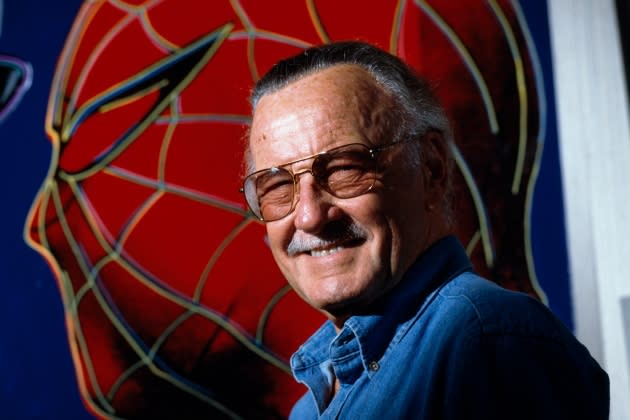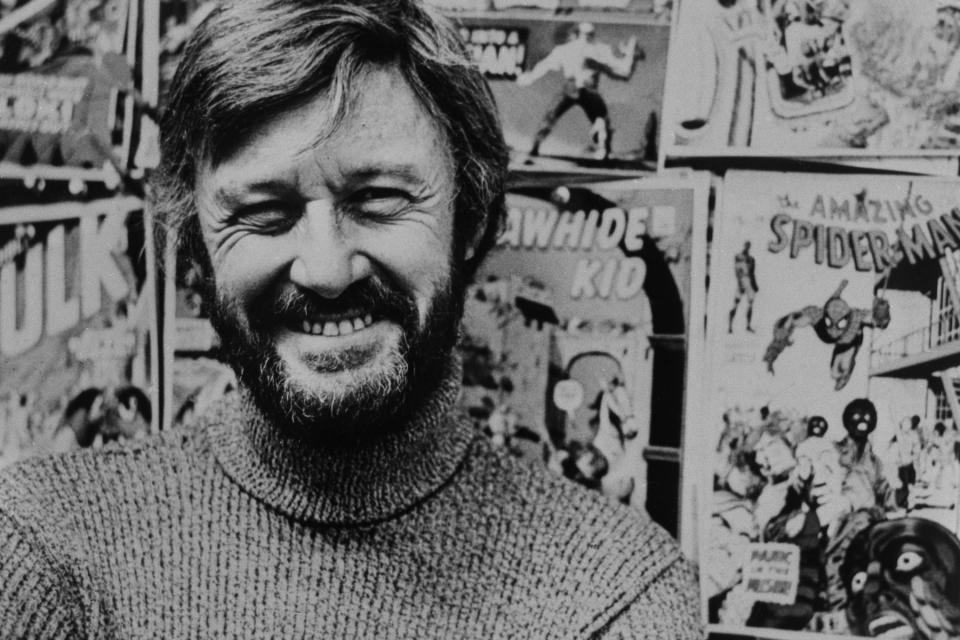‘Stan Lee’: Disney Doc on the Marvel Legend Is a Lame Infomercial
- Oops!Something went wrong.Please try again later.
- Oops!Something went wrong.Please try again later.

In the span of four years, comic book writer/editor Stan Lee would create — or co-create; put an asterisk by this verb! — the Fantastic Four, the Amazing Spider-Man, the Incredible Hulk, the Uncanny X-Men, the Mighty Thor, the Astonishing Iron Man, and both a master of the mystic arts (Doctor Strange) and a man without fear (Daredevil). He’d not only help reignite the superhero comics trend in the early Sixties but expand upon the entire concept, introducing a whole new level of psychology, relatability and multisyllabic vocabulary into the genre. A generation of readers cut their teeth on his stories of gods and monsters, with Lee’s hyperbolic dialogue complementing the eye-popping artwork. Many of his characters immediately became iconic. Now, thanks to a cinematic universe that has, for better or worse, become the multiplex’s dominant blockbuster strain, all of them are globally recognizable intellectual properties, part of one nation under a corporate cash-cow brand. Lee’s impact on the zeitgeist was, and is, seismic. He’d have been the first to tell you so.
If nothing else, Stan Lee — David Gelb’s doc on the mastermind behind the Marvel empire — serves to remind you that out of all the well-known heroes and villains he’d dreamed up, his greatest creation remains “Stan Lee”: the face (and mouth) of a publishing company, the ambassador for an art form, the hep-talking huckster who sold fans on the notion that they weren’t customers but part of a community. It wasn’t just that Stanley Martin Lieber changed his name, over what he claimed was an embarrassment over being a writer of comics; it was that his nom de plume gave him his own super alter-ego, a pop-art celebrity blessed with endless pull quotes and the power to locate a hot microphone anywhere within 10 miles. That’s the Lee you get in this near-hagiography: a peek at the man, a whole lotta the myth, and almost none of the messiness. Definitive isn’t the goal here, clearly. Printing the legend on a splash page is. It’s less a doc than a Stan Lee infomercial.
More from Rolling Stone
Lee professed that he never wrote comic books strictly for kids, aiming to appeal to an older readership while making the underage crowd that bought the bulk of Marvel’s titles more literate in the process. Stan Lee, however, is a primer that’s perfectly suited for the 12-and-under set, i.e. those viewers who mostly know him through his many MCU cameos and haven’t heard his origin story recounted a million times already. Born in New York City in 1922, the young Romanian-American Stanley was a typical Depression-era preteen, voracious in his reading and a lover of swashbuckling movies starring Errol Flynn. He’d work a series of odd jobs, from pants presser to theater usher, before a relative got him a gig as a gofer at Timely Comics in 1939. He’d pen some stories (see: name change) and become an editor before his 20th birthday. A stint in the Army, marriage, and parenthood followed. By the time Lee would rejoin the company, now known as Atlas Comics, in the early Fifties, he’d be a full-time writer of pulp and treat the profession as something that could keep him and his wife in consumerist heaven.
All of this backstory is recalled by Lee himself, taken from various TV appearances and public speaking engagements over the years, as well as a few new interviews conducted before his death in 2018. Scenes staged with action figures offer a visual component to fill in the blanks, as do the quick news montages that announce key years. Gelb, a doc veteran who’s covered everything from chefs (Jiro Dreams of Sushi, Wolfgang) to cars (A Faster Horse), knows how to move folks down memory lanes as briskly as possible, with stock tinkling pianos underscoring all of the emotional moments. By the time we get to the Marvel years, when Lee’s boss asks him for a super-group to match their DC rival’s Justice League and he dreams up a bickering quartet with fantastic new powers, the self-mythologizing begins in earnest. Along with artists Jack Kirby, Steve Ditko and a handful of others, Lee will begin an incredible creative run that changes the superhero game.

Notice the “along with” mention — the notion of authorship becomes a key factor in both Marvel’s success story and Lee’s overwhelming part in it. Who’s responsible for what in regard to the company’s stable of superheroes remains a hotly contested topic among comic-industry types and card-carrying Merry Marvel Marching Society members, and this doc isn’t the least bit interested in relitigating the argument. Lee himself brings up Ditko’s disagreements with the direction of the books he drew, yet seems puzzled that the artist wasn’t satisfied with a tiny thrown-bone of credit and downright bewildered that Smilin’ Steve flew the coop. There’s one gloriously awkward radio-show interview with Kirby from 1987 that Gelb includes, in which Lee calls in to wish his former collaborator a happy birthday. The exchange begins cordially and eventually devolves into contentiousness. It’s the closest the portrait ever gets to being critical of Lee’s need for being credited as the brains behind all of it. The movie has come to praise Stan the Man, not bury him.
And it’s what’s not here — the conspicuous absences and holes in this happily-ever-after version — that makes Stan Lee feel like it’s just shy of being nothing but a shill. Even before the documentary’s trajectory stops at Lee becoming more of a figurehead, spreading the gospel despite admitting resentment, there’s a sneaking suspicion that this is designed to be nothing but one more piece of streaming content to click on in between MCU binges. Once the movie jumps ahead to 2010 and piles on backslapping BTS sequences of Lee filming his Marvel movie guest spots, that feeling is more or less confirmed.
A lot of goodness, badness, and ugliness happened between him stepping away from day-to-day bullpen duties and Marvel finally cracking the movie-industry ceiling. With great Disney+ power does not, apparently, come with great biographical responsibility. Lee was a complicated man as much as a creator of canon-worthy superheroes and a Comic-Con deity. He deserves a 360-degree warts-and-all doc, one which goes beyond a media conglomerate’s bottom-line messaging. So do we. (Anyone wanting a more complete sense of Lee’s life and prodigious output should pick up Sean Howe’s Marvel Comics: The Untold Story and Abraham Riesman’s True Believer, both equally invaluable resources for casual and diehard fans.) In the meantime, we have this rough sketch of a biography, one in desperate need of outside inking and lettering.
Best of Rolling Stone

